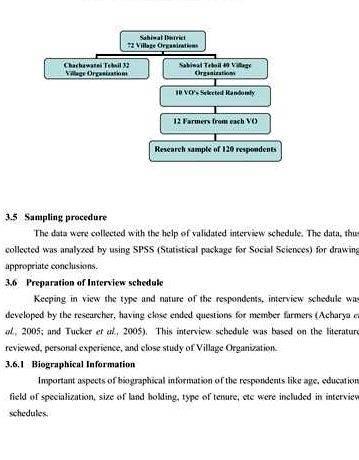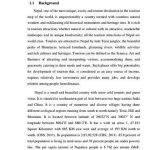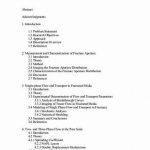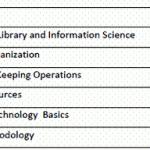Our consultants are skilled in both quantitative and qualitative methods and can
assist students choose and defend an appropriate research design.
The purpose of the methodology chapter is to give an experienced investigator enough information to replicate the study. Some advisors do not understand this and require students to write what is, in effect, a textbook. A research design is used to structure the research and to show how all of the major parts of the research project, including the sample, measures, and methods of assignment, work together to address the central research questions in the study. The chapter should begin with a paragraph reiterating the purpose of the study. The following subjects may or may not be in the order required by a particular institution of higher education, but all of the subjects constitute a defensible methodology chapter.
Appropriateness of the Research Design
This section is optional in some institutions, but required by others. Specify that the research for the dissertation is experimental, quasi-experimental, correlational, causal-comparative, quantitative, qualitative, mixed methods, or another design. Be specific. The designated approach should be defended by contrasting and comparing it with alternate methods and rejecting those that do not meet the
needs of the study. This section should not be a textbook description of various research designs, but a
focused effort to match a rational research design with the purpose of the study.
A qualitative study does not have variables. A scientific study has variable, which are sometimes mentioned in Chapter 1 and defined in more depth in Chapter 3. Spell out the independent and dependent, variables.
An unfortunate trend in some institutions is to repeat the research questions and/or hypotheses in both Chapter 1 and Chapter 3, a needless redundancy. Sometimes an operational statement of the research hypotheses in null form is given to set the stage for later statistical inferences. In a quantitative study, state the level of significance that will be used to accept or reject the hypotheses.
In a quantitative study, a survey instrument that is researcher designed needs a pilot study to validate the effectiveness of the instrument, and the value of the questions to elicit the right information to answer the primary research questions in. In a scientific study, a pilot study may precede the main observation to correct any problems with the instrumentation or other elements in the data collection technique. Describe the pilot study as it relates to the research design, development of the instrument, data collection procedures, or characteristics of the sample.
Setting and Participants
In a quantitative study, describe the geographic location where the study will take place, cite recognizable landmarks such as a nearby urban city. Describe the participant pool.
In a qualitative study, the decision regarding the number of participants in a study becomes a reflection the study’s purpose. Ten to twelve participants may prove sufficient in qualitative inquiries involving the understanding of experiences and perceptions of participants. A successful purposeful sample in a phenomenological study could range from 1 to 40.
Sample size is based on the total number of potential participants. The required sample size should be determined through a power analysis. Such an analysis uses the alpha level and the population effect size (the estimated effect of the independent variable within the target population) to estimate the number of participants needed to demonstrate an existing effect. Typically, researchers strive for a power of .80, which refers to an 80% certainty that an existing effect will be found in the sample. The effect is the difference in perceived effectiveness between mediums.
In a qualitative study, the instrument used to collect data may be created by the researcher or based on an existing instrument. If the instrument is researcher created, the process used to select the questions should be described and justified. If an existing instrument is used, the background of the instrument is described including who originated it and what measures were used to validate it. If a Likert scale is used, the scale should be described. If the study involves interviews, an interview protocol should be developed that will result in a consistent process of data collection across all interviews. Two types of questions are found in an interview protocol: the primary research questions, which are not asked of the participants, and the interview questions that are based on the primary research questions and are asked of the participants. Instruments should be placed in an appendix, not in the body of the text. Most qualitative studies include both a demographic survey to develop a picture of the participants, and an interview protocol. If the instrument is researcher created, a pilot study should be conducted to test the instrument.
In a scientific study, the instrumentation used to collect data is described in detail, which may include an illustration of the setup.
Fully describe how the data were collected. In a qualitative study, this is the section where most of the appendices are itemized, starting with letters of permission to conduct the study and letters of invitation to participate with attached consent forms. This is also the place where any study involving human subjects must state that it is compliant with the U.S. Department of Health and Human Services Code of Federal Regulations, 45 CFR § 46.102 (2009). A paragraph must be inserted that states the study is deemed to be one of minimal risk to participants and that the probability and magnitude of harm or discomfort anticipated in the research will not be greater than any ordinarily encountered in daily life, or during the performance of routine physical or psychological examinations or tests. In a quantitative study, this section will detail when and how the data were collected.
Data Processing and Analysis
In both qualitative and quantitative studies, the precise method of how the data were processed and then analyzed is described. Increasingly, in qualitative studies, data collection and analysis is accomplished by using any one of several data collection and analysis tools available on the Internet such as SurveyMonkey. Internet services are fast and accurate, and produce data that can be quickly incorporated in Chapter 4.
In a qualitative study, the procedures for the protection of human participants should be stated. This section is nearly identical in all qualitative studies, which makes it subject to identification as plagiarism when submitted to a mechanical plagiarism tool. Ethical concerns are important, particularly in reference to planning, conducting, and evaluating research. The study should present minimal risk to participants pertaining to experimental treatment or exposure to physical or psychological harm. Care should be taken to ensure that the participants fully understood the nature of the study and the fact that participation is voluntary. A statement should be made that confidentiality of recovered data will be maintained at all times, and identification of participants will not be available during or after the study.
Internal and External Validity
Validity is the criteria for how effective the design is in employing methods of measurement that will capture the data to address the research questions. There are two types of validity: internal, and external. Internal validity in quantitative studies refers to the study’s ability to determine cause and effect.
Internal validity is a confirmation of the correctness of the study design. Internal validity can be assured in both qualitative and quantitative studies with pilot testing of the proposed survey instrumentation to assure that the instrument is clear and unambiguous. Pilot testing of instruments is a procedure to enable the researcher to make modifications to an instrument based on results.
External validityis the extent to which the results of the study can reflect similar outcomes elsewhere, and can be generalized to other populations or situations. Regardless of whether a self-designed or validated instrument is used to collect data, or whether it is a qualitative or quantitative study, how validity will be assured must be stated. How the study is conducted and reported is illustrative of the validity and reliability and should align with the theoretical framework in Chapter 1. Triangulation of the results enhances the validity of findings. Triangulation validates the methodology by an examination of the results from several perspectives
Summarize the research design and prepare the reader for the next chapter.
Source: Barbara von Diether, EdD
How to write a methodology for a dissertation is quite a serious question which has to be taken care of with all due respect. Without a solid methodology chapter, a dissertation isn’t considered complete. In addition, writing a dissertation methodology is crucial in terms of submitting a dissertation proposal, when you want to land support of a professor to guide you and aid throughout the research. How to develop a proper methodology without wasting weeks on it? All the answers are here.
How to write methodology for a dissertation
All the requirements in terms of writing a methodology for a dissertation and then formatting it are usually given at the respective faculty. The main question is what actually to include in this hands down important degree paper’s section.
Basically, since a methodology is designed to describe what academic methods you used to conduct research and answer a problem stipulated in a thesis statement. All in all, there’re two groups of research methods you might want to consider:
- QUANTITATIVE – This method is all about gathering statistical data and numbers via conducting surveys, observations and secondary data (like accounts, reports, etc.) To make use of such data, statistical and cluster analysis, testing, graphs and diagrams are proven most handy;
- QUALITATIVE – This method, unlike quantitative, is based on analyzing spoken and written language in a form of reflexions regarding a certain topic. Main sources of qualitative data are interviews, focus groups, observations and secondary data as well (diaries, blogs, emails, postcards, etc.)
As a rule, drafting and then writing dissertation methodology is all about describing qualitative and quantitative methods used, as well as describing which data analysis tools you used to make particular assumptions. Furthermore, based on methods chosen a supervisor will decide whether cooperation with you is any promising and rewarding.
Depending on a structure your university demands, keep methodology’s style formal and scientific. Avoid colloquial phrases and wishy-washy word constructions. Facts and hard data are your primary objective.
Final question about writing a methodology for dissertation answered
Asking themselves how to write methodology for dissertation papers, many students look up different writing services ready to elaborate on various writing chores online. Is it any good? In fact, a deliberate student will normally keep a hand on the pulse of the process and benefit from such service greatly. It feels like having an editor in chief behind your back who’s always there with proper assistance and sound advice. Whereas a supervisor gives you a direction and checks on your current ongoings, an online dissertation helper focuses on moving into the chosen direction and coping with acute writing tasks.
Our consultants are skilled in both quantitative and qualitative methods and can
assist students choose and defend an appropriate research design.
The purpose of the methodology chapter is to give an experienced investigator enough information to replicate the study. Some advisors do not understand this and require students to write what is, in effect, a textbook. A research design is used to structure the research and to show how all of the major parts of the research project, including the sample, measures, and methods of assignment, work together to address the central research questions in the study. The chapter should begin with a paragraph reiterating the purpose of the study. The following subjects may or may not be in the order required by a particular institution of higher education, but all of the subjects constitute a defensible methodology chapter.
Appropriateness of the Research Design
This section is optional in some institutions, but required by others. Specify that the research for the dissertation is experimental, quasi-experimental, correlational, causal-comparative, quantitative, qualitative, mixed methods, or another design. Be specific. The designated approach should be defended by contrasting and comparing it with alternate methods and rejecting those that do not meet the
needs of the study. This section should not be a textbook description of various research designs, but a
focused effort to match a rational research design with the purpose of the study.
A qualitative study does not have variables. A scientific study has variable, which are sometimes mentioned in Chapter 1 and defined in more depth in Chapter 3. Spell out the independent and dependent, variables. An unfortunate trend in some institutions is to repeat the research questions and/or hypotheses in both Chapter 1 and Chapter 3, a needless redundancy. Sometimes an operational statement of the research hypotheses in null form is given to set the stage for later statistical inferences. In a quantitative study, state the level of significance that will be used to accept or reject the hypotheses.
In a quantitative study, a survey instrument that is researcher designed needs a pilot study to validate the effectiveness of the instrument, and the value of the questions to elicit the right information to answer the primary research questions in. In a scientific study, a pilot study may precede the main observation to correct any problems with the instrumentation or other elements in the data collection technique. Describe the pilot study as it relates to the research design, development of the instrument, data collection procedures, or characteristics of the sample.
Setting and Participants
In a quantitative study, describe the geographic location where the study will take place, cite recognizable landmarks such as a nearby urban city. Describe the participant pool.
In a qualitative study, the decision regarding the number of participants in a study becomes a reflection the study’s purpose. Ten to twelve participants may prove sufficient in qualitative inquiries involving the understanding of experiences and perceptions of participants. A successful purposeful sample in a phenomenological study could range from 1 to 40. Sample size is based on the total number of potential participants. The required sample size should be determined through a power analysis. Such an analysis uses the alpha level and the population effect size (the estimated effect of the independent variable within the target population) to estimate the number of participants needed to demonstrate an existing effect. Typically, researchers strive for a power of .80, which refers to an 80% certainty that an existing effect will be found in the sample. The effect is the difference in perceived effectiveness between mediums.
In a qualitative study, the instrument used to collect data may be created by the researcher or based on an existing instrument. If the instrument is researcher created, the process used to select the questions should be described and justified. If an existing instrument is used, the background of the instrument is described including who originated it and what measures were used to validate it. If a Likert scale is used, the scale should be described. If the study involves interviews, an interview protocol should be developed that will result in a consistent process of data collection across all interviews. Two types of questions are found in an interview protocol: the primary research questions, which are not asked of the participants, and the interview questions that are based on the primary research questions and are asked of the participants. Instruments should be placed in an appendix, not in the body of the text. Most qualitative studies include both a demographic survey to develop a picture of the participants, and an interview protocol. If the instrument is researcher created, a pilot study should be conducted to test the instrument.
In a scientific study, the instrumentation used to collect data is described in detail, which may include an illustration of the setup.
Fully describe how the data were collected. In a qualitative study, this is the section where most of the appendices are itemized, starting with letters of permission to conduct the study and letters of invitation to participate with attached consent forms. This is also the place where any study involving human subjects must state that it is compliant with the U.S. Department of Health and Human Services Code of Federal Regulations, 45 CFR § 46.102 (2009). A paragraph must be inserted that states the study is deemed to be one of minimal risk to participants and that the probability and magnitude of harm or discomfort anticipated in the research will not be greater than any ordinarily encountered in daily life, or during the performance of routine physical or psychological examinations or tests. In a quantitative study, this section will detail when and how the data were collected.
Data Processing and Analysis
In both qualitative and quantitative studies, the precise method of how the data were processed and then analyzed is described. Increasingly, in qualitative studies, data collection and analysis is accomplished by using any one of several data collection and analysis tools available on the Internet such as SurveyMonkey. Internet services are fast and accurate, and produce data that can be quickly incorporated in Chapter 4.
In a qualitative study, the procedures for the protection of human participants should be stated. This section is nearly identical in all qualitative studies, which makes it subject to identification as plagiarism when submitted to a mechanical plagiarism tool. Ethical concerns are important, particularly in reference to planning, conducting, and evaluating research. The study should present minimal risk to participants pertaining to experimental treatment or exposure to physical or psychological harm. Care should be taken to ensure that the participants fully understood the nature of the study and the fact that participation is voluntary. A statement should be made that confidentiality of recovered data will be maintained at all times, and identification of participants will not be available during or after the study.
Internal and External Validity
Validity is the criteria for how effective the design is in employing methods of measurement that will capture the data to address the research questions. There are two types of validity: internal, and external. Internal validity in quantitative studies refers to the study’s ability to determine cause and effect.
Internal validity is a confirmation of the correctness of the study design. Internal validity can be assured in both qualitative and quantitative studies with pilot testing of the proposed survey instrumentation to assure that the instrument is clear and unambiguous. Pilot testing of instruments is a procedure to enable the researcher to make modifications to an instrument based on results.
External validityis the extent to which the results of the study can reflect similar outcomes elsewhere, and can be generalized to other populations or situations. Regardless of whether a self-designed or validated instrument is used to collect data, or whether it is a qualitative or quantitative study, how validity will be assured must be stated. How the study is conducted and reported is illustrative of the validity and reliability and should align with the theoretical framework in Chapter 1. Triangulation of the results enhances the validity of findings. Triangulation validates the methodology by an examination of the results from several perspectives
Summarize the research design and prepare the reader for the next chapter.
Source: Barbara von Diether, EdD





 Nature cure centre thesis writing
Nature cure centre thesis writing Tourism in nepal thesis writing
Tourism in nepal thesis writing Unterschied bachelor master thesis proposal
Unterschied bachelor master thesis proposal Nagpur university phd thesis writing
Nagpur university phd thesis writing Construction management topics for thesis writing
Construction management topics for thesis writing






